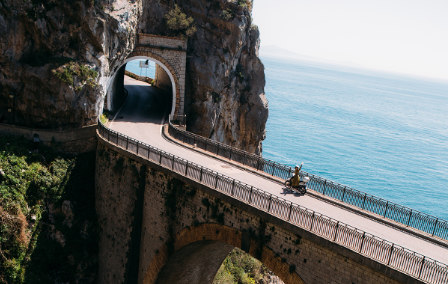Published 30th Nov. 2023
Reading time
Cheese is the holy grail of the dairy world. Whether slathered onto crackers or oozing from a toastie, there’s no denying that cheese is one of life’s greatest pleasures. This rings true across the globe, with different ways of making and eating cheese passed on lovingly from generation to generation. No matter how stinky, crumbly, tangy or melty, indulging in cheese around the world lets you get under the skin (or rind) of a country’s culinary culture. Read on for a roundup of some of the world’s most brie-lliant cheeses.
Unlike the rest of India’s fiery feasts, paneer is a mild and milky cheese that refuses to melt. This is because production involves using heat and acid instead of rennet (a win for the vegetarians), so the protein bonds are different to a typical melting cheese. Paneer’s stubborn shape allows cubes of it to be simmered, fried or grilled and popped into sauces and marinades where the rich flavours soak into the spongey texture. Think curries like the creamy spinach based saag paneer, or the heartily spiced shahi paneer – both classic Indian ways of indulging in cheese that’s a thousand delicious miles from your typical charcuterie spread.
Pinch your noses, because gorgonzola’s come to play. Italy’s funky smelling cheese was born in the Lombardy region, and legend has it that a training cheesemaker was so lovestruck that forgot about his curds overnight. Despite the spots of mould, the taste was divine and the rest is history. With its iconic blue-green veins marbled through the creamy (gorgonzola dolce) or crumbly (gorgonzola piccante) body, it’s an instantly recognisable cheese around the world. No matter how you enjoy it – melted into pasta sauces, drizzled with honey, drenched in fig chutney or paired with fresh fruits – gorgonzola is a firm favourite that can’t help but steal your attention.
Greeks don’t just like feta – they practically worship it. They’re the highest cheese consumers in the world (around 60lb per person a year) and half of that is feta. That’s right, 30lb of feta a year. And who can blame them? Made from a mix of sheep and goat’s milk, the crumbly creation exudes an intense and fresh flavour and is potentially the saltiest cheese around the world. Despite the strong flavour, it’s incredibly versatile and pairs well with vegetables, meats, pastas, pizzas and sandwiches. Or you can feast like the Greeks and enjoy it just as it is (drizzled with a few healthy glugs of olive oil). Simple, tangy and delightful.
Almost too goud-a to be true (sorry), this sweet and creamy treat is the most popular Dutch cheese around the world. It’s typically made from cow’s milk and impresses with a caramel-like flavour, nutty notes and a fudgy texture. The intensity of Gouda’s flavour develops over time – the longer it’s aged for the tangier it’ll be, and this ranges from four weeks to over 12 months. Like the sound of it? The best Gouda can be found in the very town it’s named after, where cheesemakers still come to have their cheese weighed, priced and sold at a traditional cheese market.
The world can thank California for creating a whole host of delectable dishes, and Pepper Jack is up there as a top cheesy invention. The semi-soft cheese is a variant of Monterey Jack cheese, studded with spicy jalapenos to give it a fiery kick. This heat is used to liven up sandwiches, pizzas, nachos and quesadillas, where the high moisture content allows it to melt and drizzle all over the meal. Despite the spice, it leaves a buttery taste in the mouth, and can also pair well with melons, grapes and vegetables.
Buttery and mild, Brie is a favourite for those wanting something a little bit softer on the palette. The cheesy wheels originated in – you guessed it – France’s Brie region over 2,000 years ago, making it one of the oldest in the country. To produce it, cow’s milk is curdled, rennet is added, and it’s warmed to a maximum temperature of 37°C. It’s then formed into round shapes and left to mature for 18 hours before being sprayed with mould (not the stinky kind) and left to ripen again for four to five weeks. The firm exterior and gooey interior are then best enjoyed with a hearty spread of breads, crackers and fruits. Sign us up!
Written by Evie Buller
Practical advice and inspiration for your next trip

When it comes to romance, Greece’s islands set the bar high. From Paros’ sun-kissed beaches and Folegandros’ blush-pink blooms to Sifnos’ culinary delights and Hydra’s slow-paced streets, each island radiates beauty. Whether you fall in love with the sunset in Santorini or the atmosphere in Apollonia, the perfect spot awaits. Read on to discover the most romantic islands in Greece... Paros Folegandros Sifnos Hydra Santorini Paros Best for:
27th October 2025 - Greece Travel Inspiration

Driving in the land of la dolce vita can be intimidating. Honking horns, reckless overtaking and tailgating are all (unfortunately) part and parcel of an Italian road trip holiday. But as soon as you hit the road, you’ll forget all about these anxieties – there’s no better way to experience the country’s beauty than on a road trip. Read on for our pick of the ten best road trips in Italy, whether it’s snaking through the towering Dolomites, cruising across Sicily, or rolling along the glittering Amalfi Coast.
28th December 2024 - Italy Adventure

A country synonymous with summer holidays, Greece’s guaranteed sun, delicious cuisine, rich history and sparkling coastline never fail to disappoint. Year after year, it remains one of the most visited countries in Europe. And while it’s not hard to see why most sun-seekers flock to Greece during the peak season (July and August), we’re firm champions of shoulder-season travelling, too. Keen to find out why?
17th April 2024 - Greece Travel Inspiration

Our team of destination experts will get to know you and your unique requirements for your holiday

We work with you to build an ultra-personalised holiday itinerary with your choice of accommodation, experiences and activities

All of our holidays include little extras designed to make a big difference to your trip, from fast-tracking you through airport check-in and security to our network of local Concierges